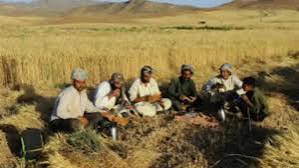Investigating factors affecting investment in Afghanistan’s agriculture sectors

Afghanistan’s agriculture sector is one of the most important pillars of the country’s economy, and more than 60 percent of people depend on it. Investment in this sector can play an important role in economic development and poverty reduction. But these investments depend on various factors, some of which are positive and some are negative. Below are the most important factors affecting investment in Afghanistan’s agriculture sector:
-
Security conditions
Security conditions are one of the most important factors that affect investment in the agriculture sector. Continuous insecurity, wars and conflicts have caused domestic and foreign investors to avoid investing in rural and agricultural areas. Insecure areas limit access to agricultural land and increase the risk of losing capital. -
Infrastructure
Lack of proper infrastructure such as roads, irrigation systems, electricity and product storage is another major obstacle in investing in the agriculture sector. Without proper roads, it becomes difficult to reach markets to sell products, which reduces the incentive to invest. The development of basic infrastructure can make the conditions more attractive for investors. -
water and irrigation
Water sources and irrigation systems are key factors in agriculture. Afghanistan is facing the problem of water shortage and lack of proper management of water resources. Frequent droughts, lack of modern irrigation systems and improper use of water resources have reduced the production of agricultural products and have challenged investment in this sector. -
Government laws and policies
Government policies and laws in the field of agriculture and land ownership are other factors influencing investment. Political instability and constant changes in laws and regulations reduce investor confidence. Also, inadequacy in the implementation of land ownership laws and conflicts related to land ownership is an obstacle to investment in this sector. -
Financial and banking support
Limited access to financial and banking facilities is also one of the biggest obstacles in investing in Afghanistan’s agriculture. Many farmers and investors are unable to secure the capital needed to develop their agricultural activities due to the lack of efficient financial systems and low-interest loans. The development of financial systems and the granting of appropriate loans can increase investment in this sector.

-
Market and export
Access to domestic and foreign markets for selling agricultural products is another important factor. Local markets are often limited by lack of infrastructure and lack of proper development. Also, the problems related to the export of agricultural products to other countries due to the lack of necessary infrastructure and export laws, reduce agricultural incomes and affect investment in this sector. -
Work force and skills
The availability of skilled and trained workforce is also another effective factor. Many farmers use traditional methods that have low productivity. Training farmers in the field of using modern technologies and improving management skills can help increase productivity and attract investors. -
Technology and innovation
The use of new technologies in the field of agriculture, such as modern agriculture, mechanization and new methods of cultivation and harvesting, can increase the productivity of agriculture and attract more investors to this sector. But the lack of access to these technologies and their high cost are important obstacles in this field. -
International aid
International aid plays an important role in the development of Afghanistan’s agriculture sector. International organizations can improve the conditions for investment in this sector through development programs, farmer training, financial resources and infrastructure development. But the instability of aid and the suspension of some programs due to political developments have affected investments.
Conclusion
Investment in Afghanistan’s agriculture sector has a high potential for growth and development, but it needs to improve security, infrastructure, access to financial resources and government support. Also, paying attention to the use of modern technologies and workforce training can help the sustainable development of this sector.